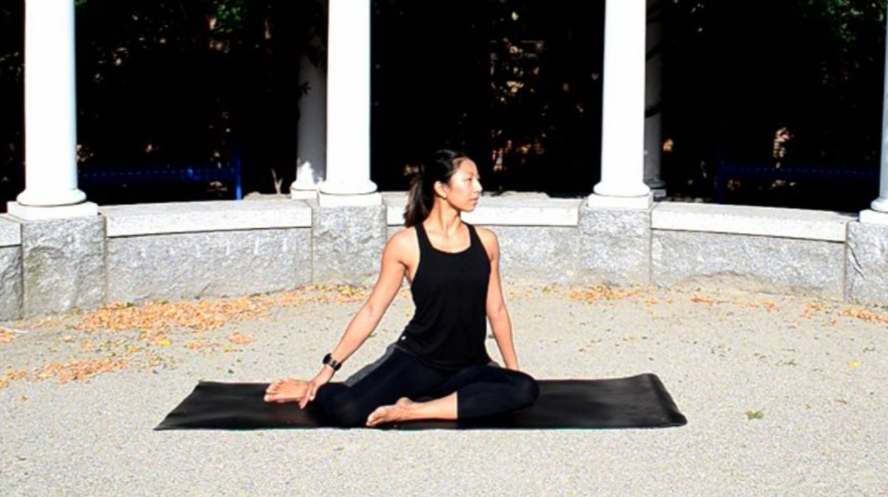Learning to accept and love our bodies is not easy, even for the healthiest and strongest people.

The serious impact of the media and our image-based culture puts pressure on us to look at it in a specific way and be able to “perform” certain poses in acrobatic and / or Hercules like ways in the context of yoga.

The fact is that for everyone who can practice a king dance style, raise their arms over their heads and reach their hind feet.

There are more than 1000 legs that are difficult to maintain balance, not to mention enough hip extension to grasp the raised feet when the legs bend.
But is one version better than the other? Of course not.
Yoga practice encourages self deconstruction so that we can truly feel the present without attachment or disgust, including accepting the position of our body in that time and space.
Therefore, this is a good practice, which can make us feel that our physical limitations are not limitations at all, but an experience, from which we can feel the ability to find space and power at any given time, whether physical or mental.
Here are some common body restrictions and alternative postures that will help you feel embodied and empowered.
Tight hip flexors.
Tight hip flexors may be the result of prolonged sitting and insufficient stretching.
They may be one of the causes of lower back pain.
How it appears in yoga practice: tight hip flexors can make it difficult for you to keep your lunge in a longer position.
They may also make it difficult for the hips to bend (think about how to use the hips in crow or standing posture to relieve the wind).
Lizard pose can be painful for people with tense hip flexors.
A good choice is anjaneyasana riding, with both hands in front of the thighs rather than arms above the head.
As you inhale through your navel and open your chest, gently press your thighs down and forward.
Stay here for a few breaths, put your hands on the cushion, slide your back knee a few centimeters towards the back of the cushion, then put your hands back on the front of your thighs and keep breathing.
Repeat the third time.
Shoulder injury: the shoulder is a ball and socket joint similar to the hip.
However, unlike the hip joint, the shoulder joint is shallow, allowing greater movement of the arm, but making the shoulder joint less stable.
The shoulder is made up of four muscles, and it is not uncommon for one or more of them to work insufficiently and become weak.
This weakness leaves behind potential shocks and tears.
How does it appear in yoga practice? It means that most of your weight-bearing exercises will be popular.
If there are existing injuries, this can be harmful.
This also means that the positions that may be practiced, such as plank posture, chaturang adandasana and basically all handstands, are not good.
Treatment of rotator cuff requires increased strength.
Putting a small amount of weight on your shoulder can help with this process.
And because practicing chaturangadandasana is not the best choice for practitioners with rotator cuff injury, a good choice is standing board and standing push ups against the wall.
Stand most of your hands on the wall, with your heels facing the front, and your feet at the same height.
First press your hands firmly against the wall, and then gently rotate your shoulders outward.
Keep your elbows as straight as possible when you press into the wall.
If you think this is good, please consider holding your upper arms together (start gently).
When you become more comfortable practicing “a”, you can start doing push ups, bending your elbows to fit you without causing any pressure.
Make sure the elbows are inward and downward as if they were pointing to the floor.
When you bend your arms to fit you, press your hands to straighten your elbows again, bringing you back to your starting position.
Knee injury: the knee joint is a hinged joint, which mainly moves forward and backward through flexion and extension.
However, when the knee flexion exceeds 10 degrees, it can perform slight internal rotation and external rotation.
Although slight, this rotation during flexion means that the knee joint is fragile.
When there is tension in the joint above the knee (hip joint) or below the knee (ankle joint), it will transfer to the knee itself.
If there is any rotation, it will put the knee in an unstable and potentially harmful position.
How it appears in yoga practice: an injured knee affects yoga practice in many ways, usually when the knee is bent.
Increase the external rotation of the hip.
For example, in the pigeon preparation position, the knee will feel tight or painful.
Knee injuries can also make it challenging to place the rear knee down in the anjaneyasana riding pose.
And depending on the injury itself, infantile and heroic (sitting and sleeping) can feel impossible.
It can be frustrating and frustrating not to be able to make the posture that other people are doing as required by the teacher.
Therefore, when the teacher says that the pigeon is ready, your knee is injured.
It is a good choice to pose yourself as a deer.
Generally speaking, this is also a good posture, because anterior hip external rotation and posterior hip internal rotation.
Of course, once the other side is finished, your left and right hips go through external rotation and internal rotation.
When practicing deer pose, it is convenient to have a towel / blanket and cushion or cushion nearby.
Starting from the binding angle position, put the left leg back into the body and put the leg in the position where the heel is close to or away from the hip.
Feel what’s comfortable for you.
If the front knee feels sensitive, you can put a cushion under it to raise it..


